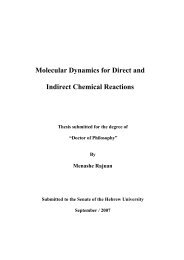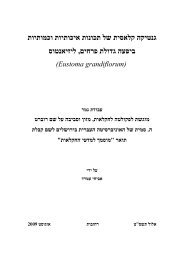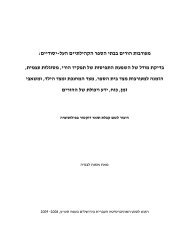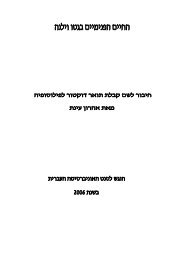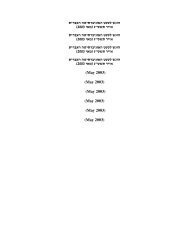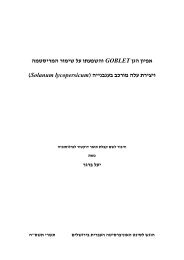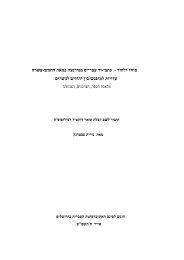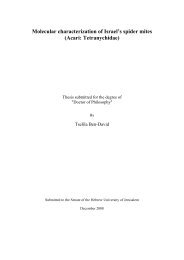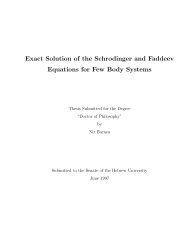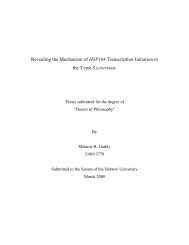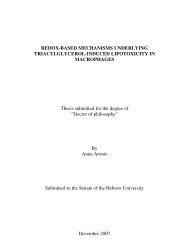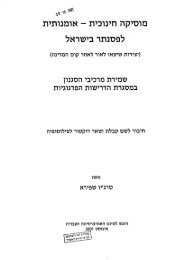××ר×ת ס×פ×ר ×× ×¡ ××קר×× ×××× ×× ××××××ª× ××שר×× - ×××× ××רס××× ××¢×ר×ת ...
××ר×ת ס×פ×ר ×× ×¡ ××קר×× ×××× ×× ××××××ª× ××שר×× - ×××× ××רס××× ××¢×ר×ת ...
××ר×ת ס×פ×ר ×× ×¡ ××קר×× ×××× ×× ××××××ª× ××שר×× - ×××× ××רס××× ××¢×ר×ת ...
Create successful ePaper yourself
Turn your PDF publications into a flip-book with our unique Google optimized e-Paper software.
material, from the point of view of the four commonplaces of education enumerated<br />
by Joseph Schwab: the subject matter, the teacher, the student and the milieu; (b)<br />
different ways of reading biblical miracle stories, based on modern hermeneutical<br />
theories, as well as classical Jewish sources; (c) the application of reading strategies to<br />
teaching techniques, taking into account the demands and needs of the<br />
commonplaces, as found in the mamad.<br />
One might have thought that the the teaching of biblical miracle stories in the<br />
mamad as literal historical events would not create particular difficulties, inasmuch as<br />
the average mamad student presumably believes in an omnipotent God who<br />
intervenes freely in the natural world. In addition, the regnant hermeneutic approach<br />
in the Orthodox milieu is the literal reading, and other approaches are often treated<br />
with suspicion. Nevertheless, a closer observation of the mamad student body reveals<br />
a more complex picture of their make-up and belief system, and their approach to<br />
biblical miracle stories is not as straightforward as might appear at first blush. In truth,<br />
biblical miracle stories have challenged readers from earliest times, and these<br />
challenges are not just a product of the twenty-first century, or of a secular worldview.<br />
In analyzing the problems attendant to the study of these stories, we will utilize M.<br />
Rosenak`s (1976) categories of first-order and second-order questions. First-order<br />
questions will relate to "internal" problems of<br />
biblical miracles, namely, inner<br />
contradictions within a story, or contradictions between the message of a biblical<br />
miracle story and other biblical ideas. For example, if the Bible presents the creation<br />
as a perfect order which is to maintain itself henceforward, a miracle that disrupts the<br />
natural order can be perceived as pointing to the imperfection both of the system and<br />
of its Creator, who has to "tinker" with the universe in order to provide the needs of<br />
its inhabitants or to carry out the divine plan. Second-order questions will relate to the<br />
310



